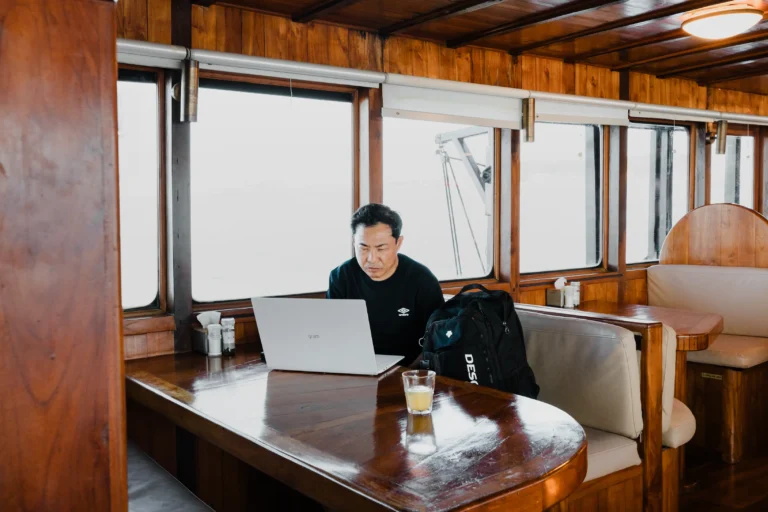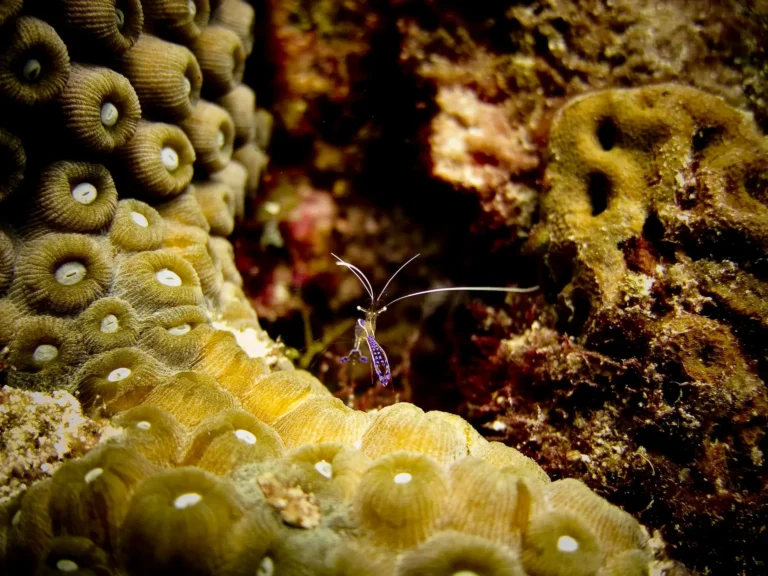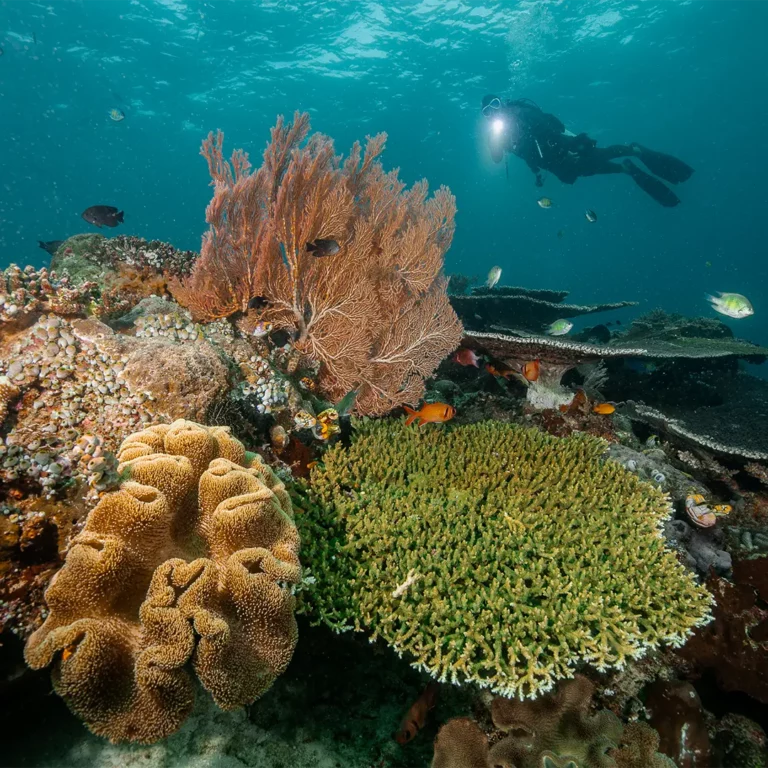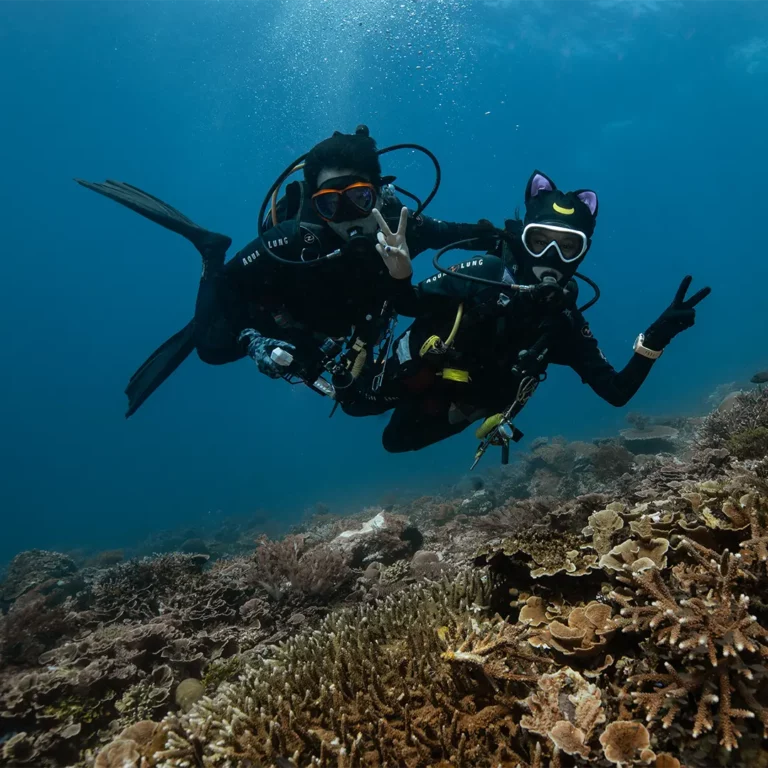Drift diving is scuba diving that is guided by the water currents at the dive site. Drift diving can be a relaxing experience for divers who are already comfortable diving. Additionally, you can cover more ground on a drift dive as you conserve energy normally spent on finning through the water.
Divers of all skill levels can enjoy drift diving dependent on the strength of the current, which is particularly enjoyable at dive sites with long features such as walls, open canyons, and wrecks.
Water currents significantly affect drift dive quality
The quality of diving is considerably affected by water currents. Many of the best dive experiences in the world involve drift diving, in which divers descend to the reef, approach the reef wall, then join the current and allow nature to push them along the surface of the wall.
The marine life is extremely diverse, and the scenery is breathtaking. Furthermore, large pelagics such as sharks, barracudas, and tuna frequently interact with you. You can stay in one location while watching the parade pass by in another. Alternatively, you can slowly drift over the reef.
There are some inherent dangers associated with drift diving however that you need to be mindful of. When a diver surfaces far from their dive boat, they may have misjudged the strength of the underwater currents. The current can easily push them away. Misjudging the current can also keep shore divers from returning to shore. It is not uncommon to search for and rescue lost divers caused due to currents.
Some divers enjoy diving with currents, while others fear and dislike it. Having a basic understanding and some practice will greatly benefit you in diving, as well as in many other areas.
Who can drift dive?
Certified divers at any level can learn to drift dive. Even international organisations provide specialised courses to teach safe drift diving techniques, but many of the world’s best drift diving locations require divers to have prior experience before they can safely dive. Our best advice is to always read dive website reviews online and get trustworthy information from the dive centre or liveaboard you intend to visit.
What equipment does a drift diver need?
A drift diver will need all of the same equipment as a normal diver, plus a few extras. Gloves and a reef hook and rope are some of these. You must understand that you are on a natural flow, and even the most powerful divers cannot outrun most ocean currents. If you need to stop, you’ll need tools to assist you.
When drift diving, you should also bring a surface marker buoy. In fact, you and other vessels must be aware of your location as the current sweeps over you. If you surface in choppy seas and require immediate assistance, a whistle or signalling mirror can be very useful.
ALSO READ : Solo Diving Pros and Cons: Advantages, Risks, Factors and Strategies
Is drift diving dangerous for beginners?
There are risks in all sports, especially outdoor and underwater sports. As a result, you should ensure that you have the necessary diving skills and are well-guided when drift diving.
In fact, if you follow the instructions given by a dive centre that is familiar with the area and the typical conditions, you should be fine! Also, have the tools mentioned above on hand so that if anything happens, you can safely surface and return to the boat. Drift diving is a fun and safe experience that every diver should try!
Best destinations for drift diving in Indonesia
Indonesia is one of the best places in the world for drift diving, with strong currents, vibrant coral reefs, and abundant marine life. Here are some of the top drift diving destinations in Indonesia:
Komodo National Park – Known for its strong currents and rich biodiversity, Komodo offers exhilarating drift dives with encounters of manta rays, reef sharks, and large schools of fish. Sites like Batu Bolong, Manta Point, and The Cauldron are famous for their current-driven dives.
Raja Ampat – Home to some of the most biodiverse waters in the world, the archipelago offers spectacular drift dives, especially in areas like The Passage, Cape Kri, and Blue Magic. The fast-moving currents bring in large pelagics and create incredible underwater scenery.
Nusa Penida & Nusa Lembongan – These islands near Bali provide excellent drift diving conditions, particularly at Crystal Bay and Manta Point. The currents here can be strong, but they attract mola molas (sunfish) and manta rays, making them a must-visit for experienced divers.
Alor – Located in East Nusa Tenggara, Alor is known for its nutrient-rich waters and strong currents, making it a fantastic destination for drift diving. Expect to see hammerhead sharks, dolphins, and vibrant coral walls teeming with life.
Banda Sea – The Banda Islands are famous for their deep walls, strong currents, and encounters with hammerhead sharks. The remote location and pristine reefs make it a drift diving paradise.
Lombok’s Gili Islands – The Gili Islands offer several drift dive sites with consistent currents. Shark Point and Deep Turbo are two popular spots where divers can encounter reef sharks, turtles, and large schools of fish while drifting along the reefs.
Drift Diving from Liveaboard
Unlike shore diving, diving from a liveaboard is not difficult. There is no struggle to carry all of your gear from car parks to beaches, fighting to get out past the breakers to the spot where you are going to drop down. The liveaboard captain and crew have done the majority of the work for you already. They are already familiar with planning and safety considerations, and they possess the necessary knowledge and boating skills. You will have a fun, enjoyable, and safe diving experience if you follow their instructions and learn basic diving skills.
Boat drift diving is typically done using a buoy line or direct boating. When drift diving with a buoy line, you must use a surface marker. One of the divers pulls a buoy and rope, which often includes a dive flag, that floats above the group of divers. By observing and following the marker, the tender boat crew can track the diver’s location.
Direct boat drift diving is similar to drift buoy diving, but it does not require a buoy or rope. The tender boat crew keep track of the group by observing bubbles breaking on the surface. The boat maintains a safe distance but is close enough to see the divers’ bubbles. This method is ineffective in choppy seas but works well in calm waters. The more choppy the water, the harder it is to see the bubbles.
The easiest and safest drift dive is to use a buoy line, which acts as a reference for the group underwater and greatly aids in maintaining a consistent depth during safety stops. A buoy on the surface awaits divers as they prepare to exit the water.
Buoy diving is more difficult than direct boat diving because one of the divers in the group must hold the line and pull the buoy. On guided dives, the guide usually does this, but it does not always happen.
If you are the diver in charge of the buoy, you will have to pay for it when the group descends. During the dive, adjust the rope coverage (the length of the rope from you to the buoy) to account for significant depth changes and prevent snagging. To avoid becoming entangled in excess rope, retract the rope when ascending.
ALSO READ : 10 Tips to Become an Eco-Friendly Diver
The majority of buoy divers use reels, though some carry multiple coiled ropes in their hands. To ensure safety when towing a buoy, the diver should hold the reel or rope in his hand rather than tying it to his body or equipment. Although it appears unlikely, a diver with a coil of rope attached to a buoyancy compensator device (BCD) or a rope wrapped around his arm can be dragged to the surface, resulting in a decompression injury. This occurs when a passing boat hits the buoy and pulls on the rope.
When drift diving, whether with a buoy line or a live boat, all divers should form a group. This means that each diver should be ready and prepared before the first diver enters, with the remaining divers following closely behind.
When live-boating, depending on the type and speed of the current, divers should enter in sequence, descend immediately, and regroup at the bottom. When using a buoy, divers can stay on the surface near it until everyone has entered, then descend together. The techniques for diving from a charter boat will be explained during the initial briefing.








